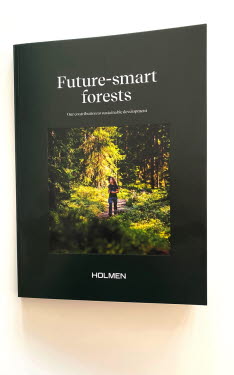If you work in paper purchasing, you can take pride in the fact that the paper industry displays better sustainability performance than many other industries. The paper industry is a highly regulated sector, and this in itself leads to better performance in general compared to less regulated sectors, according to sustainability rating platform Ecovadis. They also underline that industries where the purchasing segment look at environmental impact from all levels across the value chain perform much better.
For relevant reporting on carbon emissions, you need to look not only at your own, but also at emissions generated by your supply base, Ecovadis says. This will help your company create effective GHG reduction actions and improve your own sustainability performance.
A circular approach and the responsible use of resources is an absolute must for sustainable paper and packaging industries. Read more about how we at Holmen work with our raw material in our book "Future-smart forests – our contribution to sustainable development".
Get a free copy of the book



